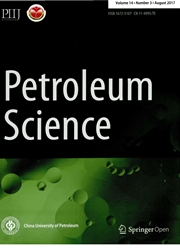

 中文摘要:
中文摘要:
这份报纸试着造能在水库在实时评估液体信息的原子磁性的回声(NMR ) 液体分析实验室在几千米的深度调节的多功能的 downhole。目的是监视形成液体和份量上的污染评估液体的 NMR 特征。它与零迷路的域集中于结构的设计和一个传感器的参数。二分开的卷被设计测量流动或静态的液体的 NMR 特征。一个方法被建议使用 Bloch 方程,到指导 NMR 传感器的优化。最后,测量结果证实设计是合理的。有一块同类的静态的地(对轴的方向垂直) 在传感器的中心,并且没有迷路的外部地。极化前磁铁的新奇设计改进信号到噪音比率,当弄短时传感器长度。
 英文摘要:
英文摘要:
This paper tries to build a multi-functional downhole nuclear magnetic resonance (NMR) fluid analysis laboratory that can evaluate fluid information in real time at reservoir conditions at a depth of several thousand meters. The aim is to monitor the pollution of the formation fluids and quantitatively evaluate NMR characteristics of the fluids. It focuses on the design of the structure and parameters of a sensor with zero stray fields. Two separate coils are designed to measure NMR characteristics of flowing or static fluids. A method is proposed to use the Bloch equation, to guide the optimization of the NMR sensor. Finally, the measured results confirm that the design is reasonable. There is a homogeneous static field (perpendicular to the axial direction) in the center of the sensor, and there are no stray external fields. The novel design of pre-polarization magnet improves the signal to noise ratio, while shortening the sensor length.
 同期刊论文项目
同期刊论文项目
 同项目期刊论文
同项目期刊论文
 期刊信息
期刊信息
